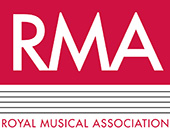Although this conference was described as a one-day event, we received a wonderful introduction the night before at Guildhall School of Music, offered by conference organizer Eva Moreda Rodriguez (University of Glasgow) who walked us through 40 years of marvelous Spanish zarzuela recordings, complete with live performances from staff member and pianist Ricardo Gonsalbo and students of singing.
Spanish Moreda Rodriguez and her co-organizer Croatian Inja Stanović (University of Huddersfield) were a testament to the international character of the conference, which counted over 12 nationalities and was so well attended (over 40 delegates) that parallel sessions were needed during part of the day.
The morning at the beautiful Pushkin House started with a session on piano and organ rolls, featuring very well researched papers by Stephanie Probst (University of Cambridge), Esther Burgos Bordonau (Universidad Complutense de Madrid) and Christopher Holman (University of Oxford). An interesting discussion ensued regarding the visual aspect of the rolls and their apparent connection to modernist art, as well as regarding the performance or human involvement in reproduction, perhaps comparable to modern dj’ing.
Most of the papers could loosely be connected to either string instruments, piano or singing, with many of the delegates being active performers themselves. Both Joanna Staruch-Smolec (Conservatoire Royal de Bruxelles), in a revelatory talk on early Ysaÿe recordings, and Carol Lieberman (College of the Holy Cross) offered live demonstrations on their violins. Live demonstration was also part of Neal Peres da Costa´s (Sydney Conservatorium of Music) personal and fascinating keynote lecture, with reflections on how his development as a performer and scholar has been influenced by early recordings and historically informed performance.
Barbara Gentili (Royal College of Music), Daniele Palma (University of Florence), Sarah Fuchs (Syracuse University) and Fatima Volkoviskii (Universidad Complutense de Madrid) offered a varied and rich session dedicated to different aspects of singing with topics ranging from Flamenco, to pedagogy, timbre and aesthetic changes in vocal production.
Many fascinating details from recordings were highlighted or shown in a new light during this conference. Cellist Ana Llorens (Universidad Complutense de Madrid) brought out unknown patterns of movement vs stasis in recordings by Casals and Feuermann, while Karina Zybina (Paris Lodron University of Salzburg) showed us the surprising tempo differences between different early recordings of Mozart´s Requiem. Pierre Riley pointed to interesting accentuation patterns in early piano recordings of Bach works, while Inja Stanović´s paper focused on what she described as moiré patterns when using research for historically informed performance.
The evolution of the practical process of early recordings was explained in an easily-understood talk by Felipe Garcia Suarez (University of Birmingham).
The conference finished on a particularly high note with a unique presentation by Richard Beaudoin and Neil Heyde, recounting their collaboration on works by Beaudoin that are inspired by and based on specific early recordings. Furthermore, the presentation offered the great privilege of listening to the highly distinguished cellist Rohan de Saram, who together with Neil Heyde convincingly performed the piece Les deux lauriers by Beaudoin.
Early recordings is a research area that tends to generate debate, and each presentation spurred many questions, observations and subsequent conversations at the coffee table. Without doubt, the most contentious issue, bringing forward an array of opinions, was the question of how much (or in what way) early recordings can be used to understand nineteenth-century musical practices. No doubt, this is a topic that we will have to continue debating during the next Early Recordings conference, which we all hope will take place next year.
Gabrielle Kaufman is a cellist, musical researcher and associate teacher at Universitat Autónoma de Barcelona.
